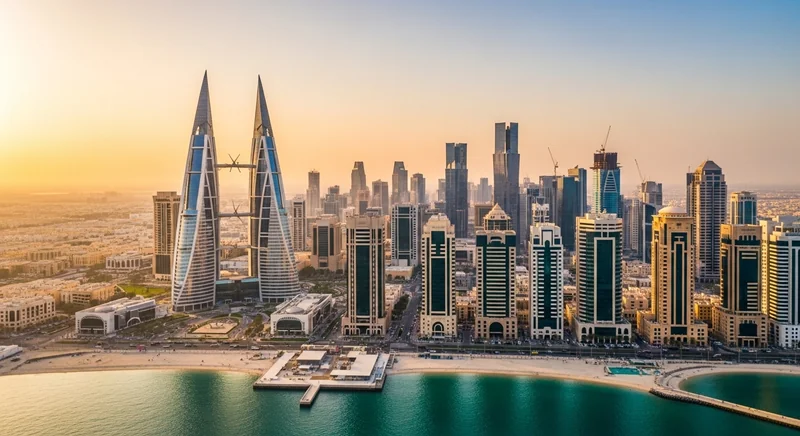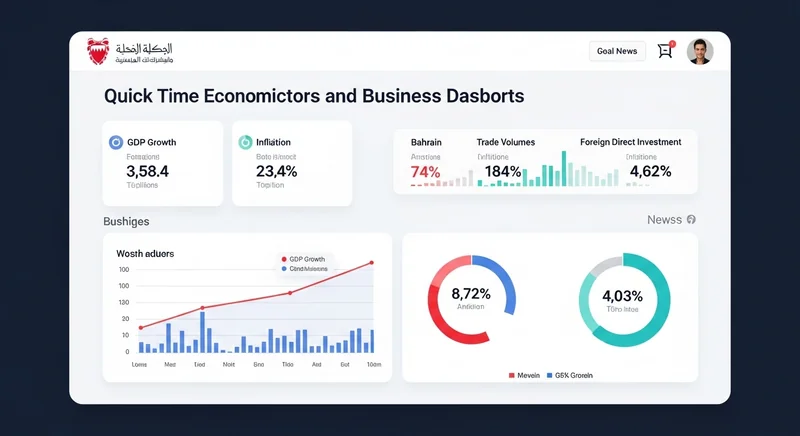The Future of Bahrain's Market Economy

The Future of Bahrain's Market Economy
Bahrain, a key player in the Gulf region, is paving its path toward a diversified and resilient economy. As the nation continues to evolve, understanding the dynamics of Bahrain's market economy is crucial for businesses and investors aiming to capitalize on emerging opportunities. This article explores the economic development landscape, highlighting key growth sectors and the strategic shifts shaping Bahrain's economic future.
Unveiling Bahrain's Economic Growth Trajectory
Bahrain's economy is projected to grow by 2.8% in 2025, underscoring its stable growth trajectory despite global economic challenges. This growth is significantly driven by the expansion of the non-oil sector, which now contributes 83% to the GDP, a remarkable increase from 58% in 2002. This shift reflects Bahrain's strategic focus on diversifying its economic base beyond hydrocarbons.
Key Economic Sectors Fueling Growth
-
Financial Services: As Bahrain's largest economic contributor, the financial services sector accounts for 17.8% of the GDP. This sector's robust growth is supported by progressive regulatory frameworks and a focus on digital transformation.
-
Tourism and Hospitality: With a target to contribute 11.4% to the GDP by 2026, the tourism sector is pivotal in driving economic diversification. Recent growth in the hotel and restaurant industry by 13.6% highlights the sector's potential.
-
Logistics and Infrastructure: The logistics sector is poised to contribute up to 10% of GDP by 2030, bolstered by major infrastructure projects like the Bahrain Light Rail Network and the East Hidd City development.

Economic Indicators and Market Analysis
Bahrain's economic indicators present a mixed yet promising picture. While the fiscal deficit is expected to rise to 7% of GDP by 2025, strategic investments and reforms aim to mitigate these challenges. The Bahrain Economic Development Board's success in attracting $1.1 billion in FDI in 2022 emphasizes investor confidence in the market.
Understanding Market Dynamics
-
Foreign Direct Investment: With over 6,300 jobs expected from recent investments, FDI remains a cornerstone of economic strategy, driving job creation and innovation.
-
Employment Trends: The employment rate is projected to be 72.06% in 2025, reflecting a dynamic labor market that continues to evolve with economic reforms.
Strategic Economic Reforms and Sustainability
Bahrain's commitment to sustainability and economic reform is evident in its Economic Recovery Plan, which integrates fiscal sustainability and carbon neutrality goals. By 2060, Bahrain aims to achieve carbon neutrality, promoting renewable energy and sustainable development.
The Role of Real-time Business Insights
For businesses and investors seeking to navigate Bahrain's evolving market landscape, access to real-time data and business insights is invaluable. Utilizing a real-time API providing business insights from Bahrain's business directory can empower stakeholders with up-to-date intelligence, enabling informed decision-making and strategic planning.

Conclusion: Embracing Bahrain's Economic Potential
As Bahrain continues to diversify and strengthen its economy, opportunities abound for businesses and investors ready to engage with this dynamic market. Understanding the economic indicators, sectoral growth, and strategic reforms will be key to leveraging Bahrain's market potential. By staying informed and agile, stakeholders can effectively position themselves for success in Bahrain's future economy.
For those looking to deepen their market analysis and strategic insights, leveraging real-time business intelligence tools can provide a competitive edge in navigating Bahrain's vibrant economic landscape.